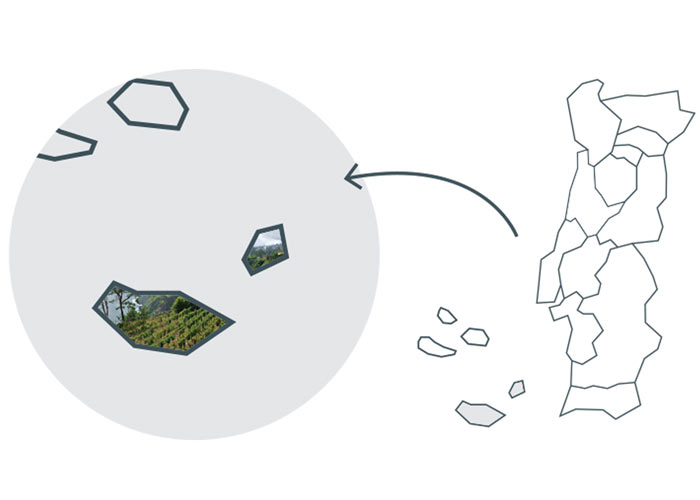Wine regions
Portuguese wine regions
Madeira
A bit of history
Discovered by Portuguese explorers in 1418, Madeira soon attracted Prince Henry’s attention – who considered it privileged for planting vine and sugar cane. For that purpose, Malvasia vines were imported from Napoli di Malvasia, near Sparta.
Sweet and fragrant, Madeira wines have enjoyed for centuries: in his play ‘Henry V’, Shakespeare had his character Falstaff selling his soul to the devil in exchange for a a glass of Madeira. At the time, it is said that court ladies would use Madeira to perfume their handkerchieves. And if you think that’s too exaggerated, what to say about the Duke of Clarence, a noble Englishman who, after being sentenced to death for attempting to murder his brother, Edward IV, chose to die by drowning in a Madeira Malvasia cask.
What to expect?
Madeira’s fortified wines keep practically for ever – they have been known to survive for more than two centuries.
Out in the Atlantic, on the same latitude as Casablanca, the island enjoys mild temperatures throughout the year, but the climate is also strongly influenced by the ocean. It is extremely mountainous, with deep valleys and steep slopes where the vines grow on little terraces in fertile, acid, volcanic soils that are very rich in organic matter.
Vines are mostly trained on traditional pergolas, the bunches hanging below, shaded from the sun by exuberant foliage. Yields are high. The resulting grapes have high acidity – a distinguishing feature that they pass on to all Madeira wines.
A small clutch of historic Madeira grapes are known as the ‘noble’ varieties: Sercial, Verdelho, Boal, Malvasia (sometimes called Malmsey) and the rarer Terrantez. All are white, and the first four are traditionally vinified to give different degrees of sweetness in the finished wine: respectively dry, medium-dry, medium-sweet and sweet.
Terrantez makes fine, dry wines with very marked acidity. However, 80 per cent of the island’s vineyards are planted with another variety, Tinta Negra, which is made into fortified wines of all four traditional sweetnesses. Some table wines are also made on the islands.
Common varieties: Sercial, Verdelho, Boal e Malvasia.


